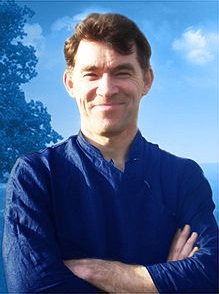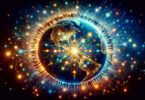Guest writer for Wake Up World
My main area of research as a psychologist is what I call “transformation through turmoil.” Occasionally, people who suffer intense turmoil and trauma undergo a profound shift. They feel a powerful new sense of well-being, appreciation, and meaning. Their relationships become more authentic and intimate. They feel as if they’ve woken up and are living in a fuller and more intense way.
[pro_ad_display_adzone id=”110028″]
In my recent book Extraordinary Awakenings, I showed that transformation through turmoil often follows bereavement, a diagnosis of cancer, a period of depression or addiction, or incarceration. However, I’ve found that the single most powerfully transformative experience that human beings can undergo is a “near-death experience.”
In this sense of term, a near-death experience (or NDE) happens when a person is either very close to death (perhaps through a fall or in a coma) or actually does briefly die in a clinical sense. For instance, after cardiac arrest, a person’s brain and body may shut down for a short period before they are resuscitated. In many cases—about 20%, according to some studies—people report that even though their brain showed no signs of activity, they underwent a remarkable series of experiences. Typically, they report leaving their body and looking down from above (sometimes describing medical procedures in very specific detail), then floating away into space, sometimes through a dark tunnel towards a light. They report a tremendous well-being, with feelings of connectedness and love. Sometimes they see a review of their whole lives, flashing by in the space of a few seconds.
Although NDEs only last for a few minutes of normal time (at the most), they almost always have a transformational effect. People undergo a major shift in perspective and values. They become less materialistic and more altruistic; they feel more connected to nature, with more love and compassion for others. They have a heightened sense of beauty, and often relish solitude and inactivity in a way that they had never done before.
There have been many attempts to explain NDEs as an illusion or hallucination caused by unusual brain activity, but to date, no satisfactory explanation has emerged. In fact, in my view, the fact that the experiences almost always bring a powerful and permanent transformation strongly suggests that they are not an illusion. Illusions are rarely, if ever, life-changing.
Psychedelics and NDEs
In view of the above, I was fascinated to read a new study of the transformative effects of NDEs and psychedelics conducted by researchers at Johns Hopkins University School of Medicine in the U.S. The study analysed the experiences of over 3,000 people who reported changes in attitude toward death after both psychedelics (including LSD, psilocybin, DMT, and ayahuasca), and NDEs. Both experiences brought a more positive and accepting attitude to death, with less fear. In line with my own research, participants reported significant increases in well-being, purpose, and meaning.
At the same time, there were some slight differences between the two groups. Both types of experiences were described as spiritual or mystical, featuring a sense of oneness, transcendence, sacredness, and awe, but these elements were stronger in psychedelic experiences. However, NDEs were more likely to be reported as “the single most meaningful, spiritually significant, insightful, and challenging of their lives.”
Why are NDEs and Psychedelics Transformative?
NDEs and psychedelic experiences have very different characteristics. Common elements of NDEs include traveling through darkness towards a light (or a transcendent place), reaching a border or point of no return, encountering deceased relatives, or a life review. But these don’t feature in psychedelic trips. So it might seem strange that they have similar transformative effects.
However, both experiences take us beyond the limitations of our normal awareness. Our normal state is to see the world through a filter of thoughts and concepts, with a never-ending stream of associations passing through our minds. Through this filter, our everyday surroundings seem familiar and mundane. We also have a sense of living in duality to the world, inside our minds and bodies with the rest of the world “out there.”
In NDEs and psychedelics, the world becomes a completely different place. It becomes much more real and beautiful. We feel a sense of connection or even oneness towards things, and to the world in general. We feel a sense of meaning and harmony, which seems to be a natural, obvious quality of the world. This heightened awareness has a powerful revelatory quality. It changes us fundamentally and permanently.
Of course, NDEs bring much more than this. They also involve a close encounter with death, which in itself can be transformational, making us aware of the preciousness and fragility of life. Many people who have NDEs feel that they have actually died for a short time, which is partly why they develop a more positive attitude to death. This is probably why the above study found that NDEs were more transformational than psychedelic experiences.
The Frequency of Transformation
It’s worth remembering that not all—or even most—psychedelic experiences are life-changing. In the above study, there is no discussion of how frequently psychedelics have such an effect. For all we know, the participants may have had several other psychedelic experiences that didn’t affect them deeply. In contrast, NDEs are almost always transformational.
A 2012 paper examined the similarities between NDEs and DMT and found that permanent change was much less common following DMT. The effect of psychedelics depends on context, intention, and psychological traits. Psychedelics are more likely to be transformational if they are approached in a spiritual context, as opposed to casual use. Recent research also suggests that psychedelics can help to alleviate depression and anxiety and lead to increased emotional well-being.
Psychedelic journeys should not be undertaken lightly. But, in the right circumstances, they can be almost as revelatory as near-death experiences.
Originally published at Psychology Today and reproduced here with permission.
Recommended articles by Steve Taylor, Ph.D:
- Hypnotic Healing: What is Responsible for the Placebo Effect and Hypnosis?
- Beyond Religion: Will Human Beings Ever Transcend the Need for Religions?
- The Transformational Effects of Bereavement
- Post-Traumatic Creativity: How Psychological Turmoil Can Unlock Our Creative Potential
- The Meaning of Life May Be Life Itself
- Spiritual Depression
- Do Psi Phenomena Exist? A Debate (Part One)
- Do Psi Phenomena Exist? The Debate Continues
- David Ditchfield’s Remarkable Near Death Experience
About the author:
Steve Taylor is a senior lecturer in Psychology at Leeds Beckett University, UK. His latest books in the US are The Calm Center and Back to Sanity: Healing the Madness of the Human Mind. He is also the author of The Fall, Waking From Sleep, and Out Of The Darkness. His books have been published in 19 languages. His research has appeared in The Journal of Transpersonal Psychology, The Journal of Consciousness Studies, The Transpersonal Psychology Review, The International Journal of Transpersonal Studies, as well as the popular media in the UK, including on BBC World TV, The Guardian, and The Independent.
Connect with Steve at StevenMTaylor.com.
[pro_ad_display_adzone id=”110027″]








